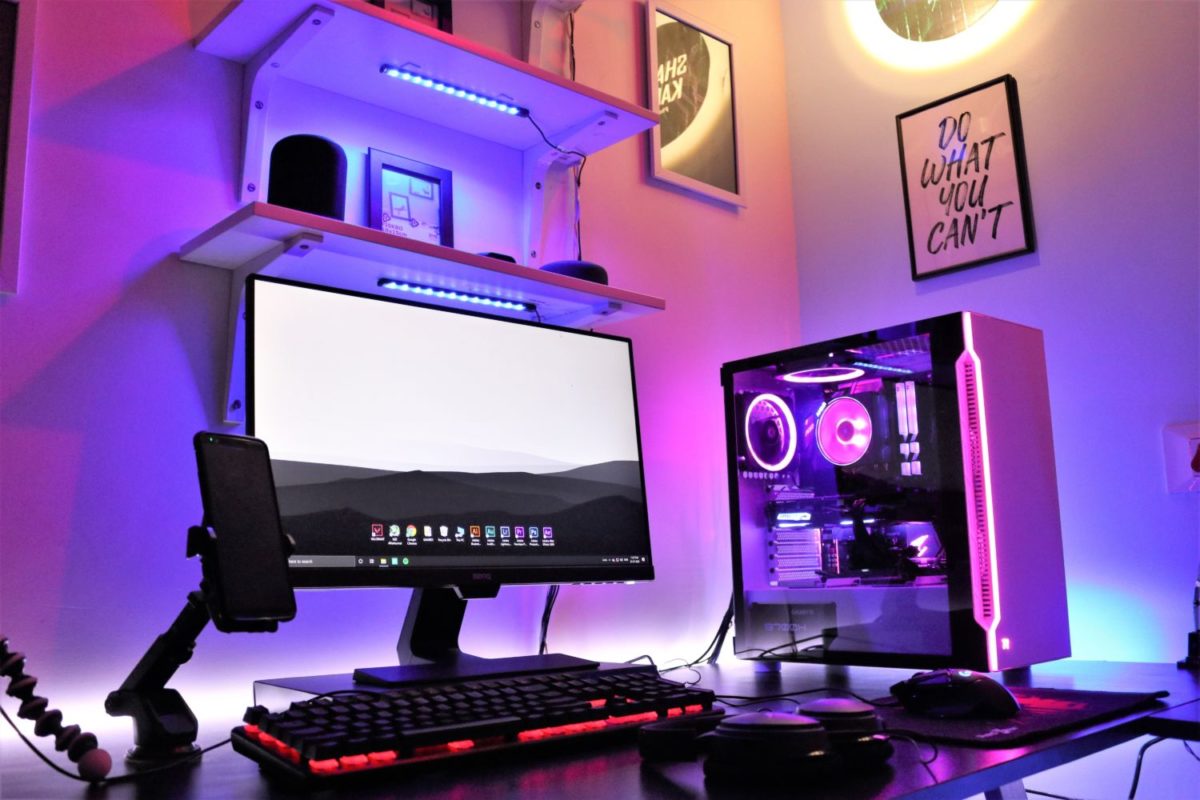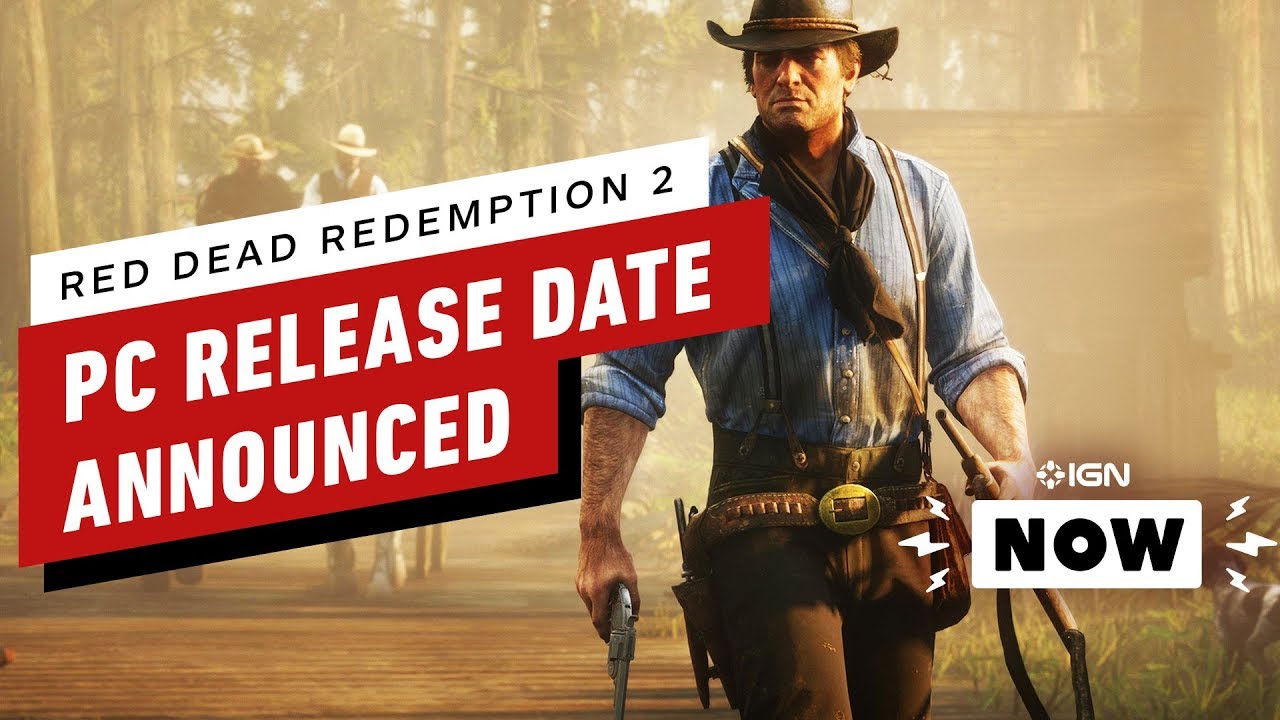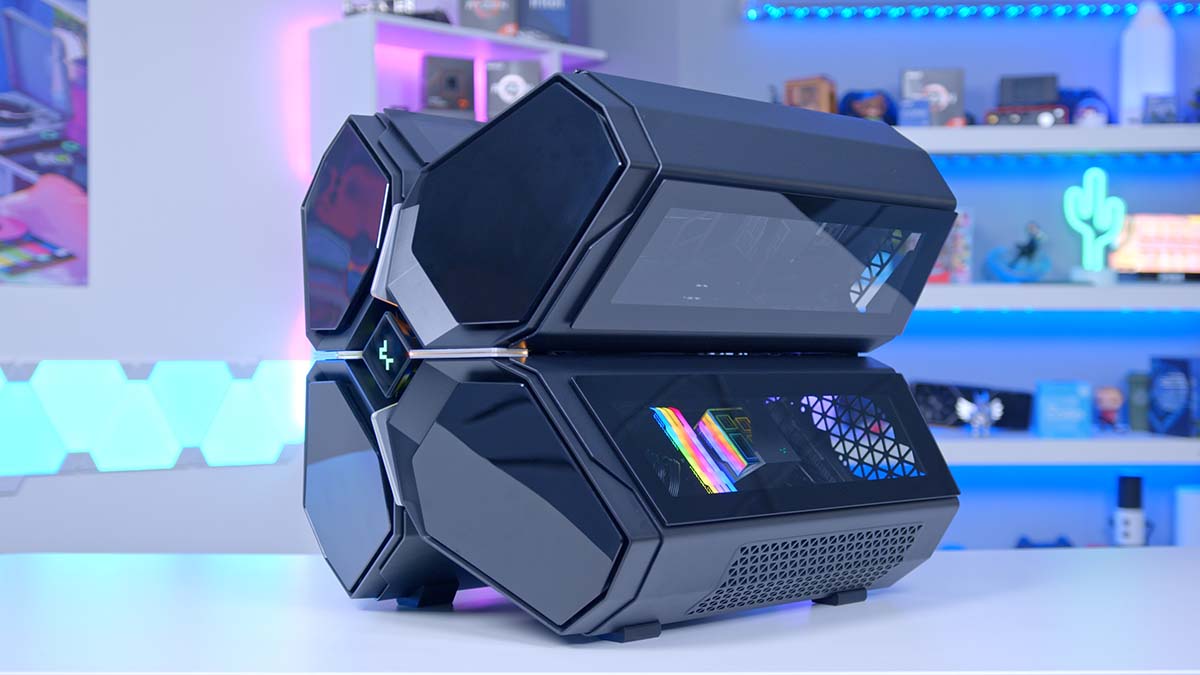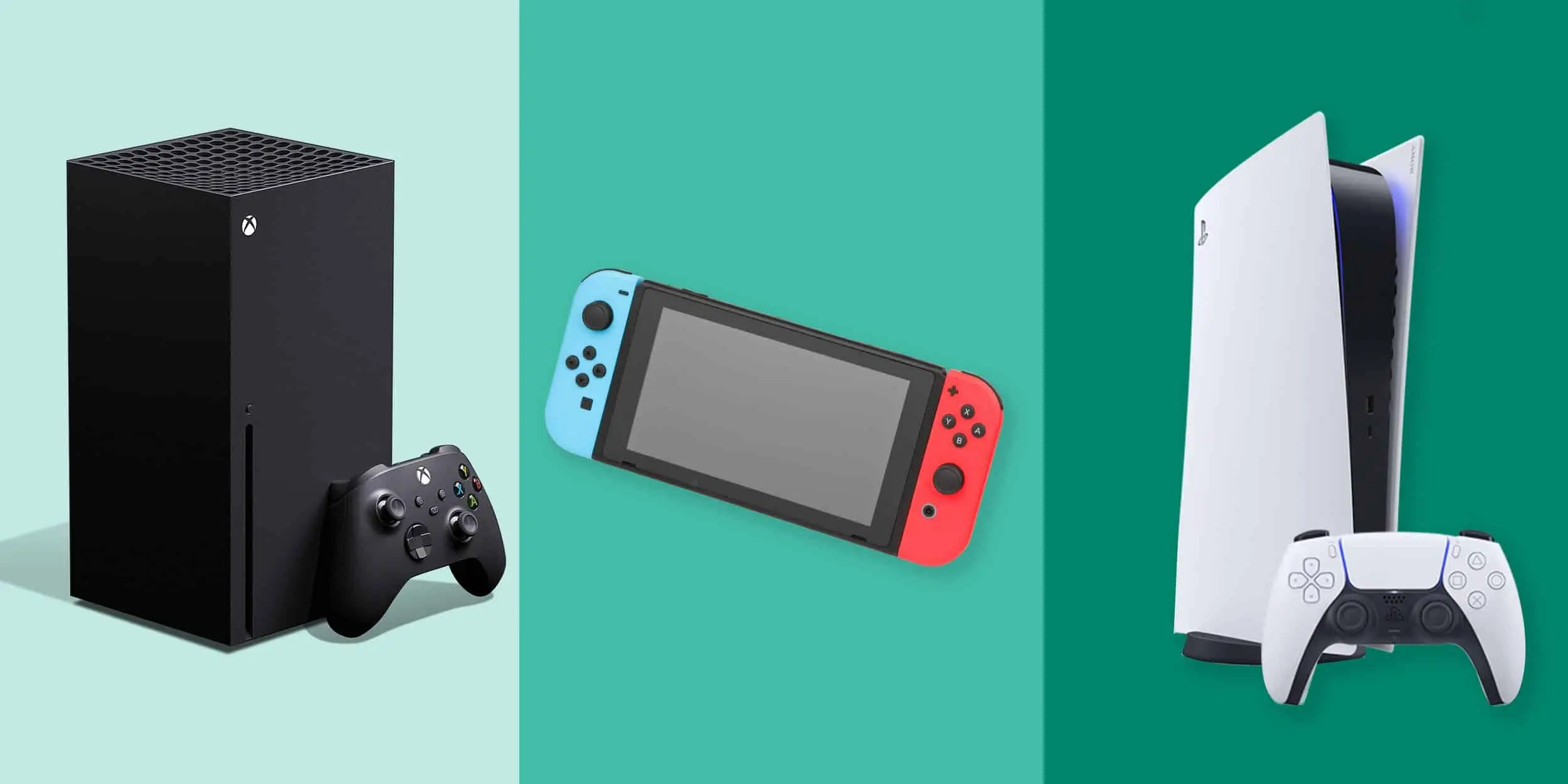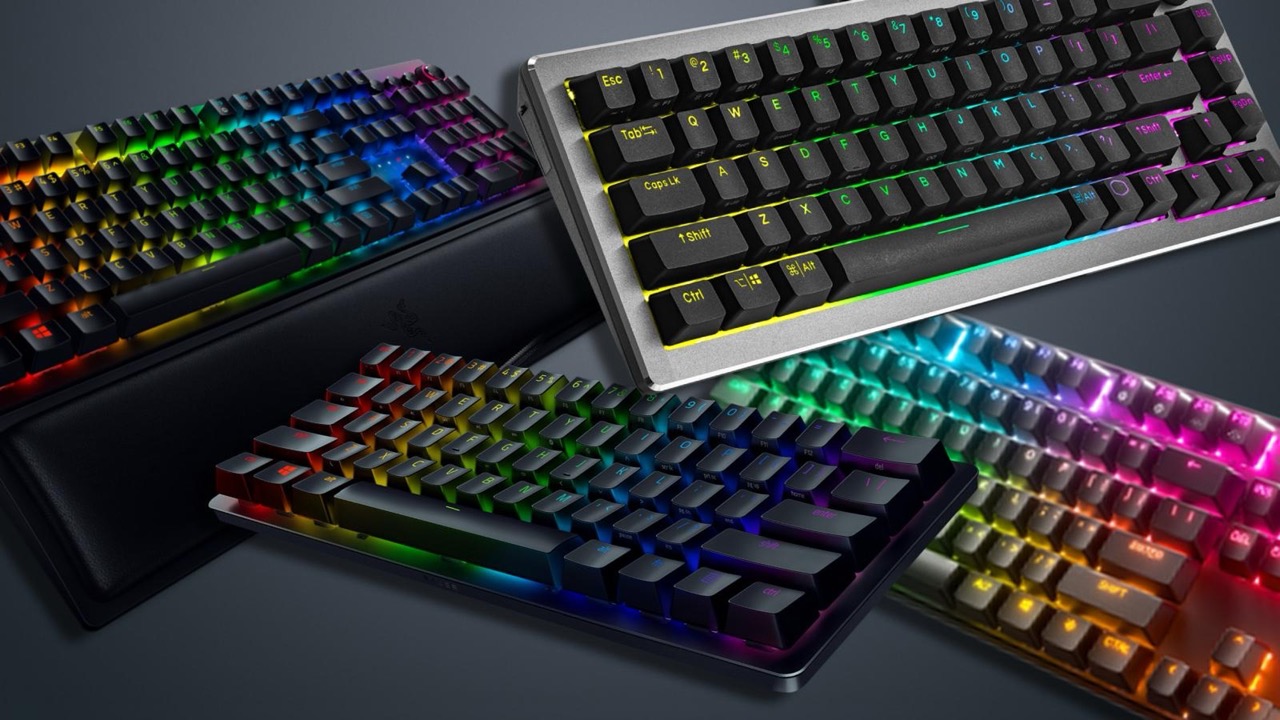Introduction
Welcome to the world of online gaming! Whether you’re a seasoned gamer or just starting out, having the right gaming PC can significantly enhance your gaming experience. With the ever-evolving technology, building your own online gaming PC has become more accessible and affordable than ever before.
In this guide, we will take you through the process of choosing the right components, building your own online gaming PC, installing the necessary software, optimizing its performance, troubleshooting common issues, and providing tips and tricks to enhance your online gaming experience.
Gone are the days of settling for prebuilt gaming PCs that come with limitations and hefty price tags. Building your own gaming PC allows you to customize every aspect of your system, ensuring that it meets your specific needs and preferences. Whether you are into graphics-intensive games, online multiplayer battles, or streaming your gaming sessions, a well-built gaming PC can provide you with the power and performance you desire.
Before we dive into the technical details, it’s important to understand that building a gaming PC requires some knowledge of computer hardware and basic troubleshooting skills. However, don’t be intimidated if you’re new to this. With a little research and guidance, you’ll be well on your way to building your dream online gaming PC.
In the following sections, we will walk you through the process step by step, ensuring that you have a clear understanding at each stage. From selecting the right components and assembling your PC to optimizing its performance and troubleshooting any issues that may arise, we’ve got you covered.
So, without further ado, let’s dive in and explore the wonderful world of building your own online gaming PC. Get ready to take your gaming experience to the next level!
Choosing the Right Components for Your Online Gaming PC
When it comes to building an online gaming PC, choosing the right components is crucial for optimal performance and a seamless gaming experience. Here are some key factors to consider when selecting your components:
- Processor (CPU): The processor serves as the brain of your gaming PC and is responsible for executing instructions. Look for a high-performance processor with multiple cores and a high clock speed to handle demanding games and applications.
- Graphics Card (GPU): The graphics card is vital for rendering high-quality graphics and ensuring smooth gameplay. Invest in a powerful GPU with ample video memory to handle the latest games. Consider factors like VRAM, GPU clock speed, and CUDA cores.
- Memory (RAM): RAM plays a crucial role in multitasking and loading game assets quickly. Aim for at least 8GB of RAM, but consider 16GB or higher for a more future-proof system.
- Storage: Opt for a combination of solid-state drives (SSD) and hard disk drives (HDD). SSDs provide faster loading times, while HDDs offer more storage space at a lower cost. Install your operating system and frequently played games on the SSD for optimal performance.
- Motherboard: The motherboard acts as the foundation for your gaming PC, connecting all the components. Ensure compatibility with your chosen CPU and GPU, and look for features like PCIe slots for future upgrades.
- Power Supply Unit (PSU): Choose a reliable and efficient PSU that can provide enough power to your components. Consider factors like wattage, certification, and modular vs. non-modular cables.
- Cooling: Adequate cooling is essential to prevent overheating and maintain performance. Invest in a quality CPU cooler and case with good airflow. Consider additional case fans if needed.
It’s also important to consider factors like budget, future upgradeability, and personal preferences. Research and read reviews to narrow down your choices and find the components that best meet your needs.
Remember, building an online gaming PC is a long-term investment, and choosing high-quality components will ensure that your system can handle the latest games and provide an immersive gaming experience for years to come. Take your time in this process, and don’t hesitate to seek advice from experienced gamers or PC enthusiasts.
Now that we’ve covered the basics of component selection, let’s move on to the exciting part – building your online gaming PC from scratch!
Building Your Online Gaming PC Step by Step
Building your own online gaming PC may seem like a daunting task, but with some patience and careful following of instructions, it can be a rewarding experience. Here is a step-by-step guide to help you through the process:
- Prepare Your Workspace: Find a clean, well-lit area to work in. Make sure you have all the necessary tools within reach, such as a screwdriver set, thermal paste, cable ties, and an anti-static wristband (optional but recommended).
- Install the CPU: Start by inserting the CPU into the socket on the motherboard. Open the socket lever, align the arrows on the CPU and socket, and gently lower the CPU into place. Close the lever to secure it.
- Attach the CPU Cooler: Apply a small amount of thermal paste to the center of the CPU, then attach the CPU cooler. Secure it in place using the provided mounting brackets or screws.
- Install RAM: Locate the RAM slots on the motherboard and carefully insert the RAM sticks. Ensure that they are fully seated and locked into place. Refer to your motherboard manual for proper installation.
- Mount the Motherboard: Place the motherboard into the case, aligning the screw holes. Use the provided screws to secure it in place. Connect the necessary cables, such as the power supply, USB headers, and front panel connectors.
- Install Storage Drives: Install your SSD and HDD into their respective drive bays, then connect the SATA data cables and power cables. Ensure proper cable management to maintain good airflow.
- Install the Power Supply: Slide the power supply into its designated area in the case and secure it with screws. Connect the necessary cables to the motherboard, GPU, storage drives, and other components.
- Mount the GPU: Remove the appropriate slot cover on the back of the case, align the GPU with the PCIe slot on the motherboard, and firmly press it down until it clicks into place. Secure it with screws.
- Connect Peripherals: Connect your monitor, keyboard, mouse, and other peripherals to the appropriate ports on the back of the case.
- Double-check and Power On: Before closing the case, double-check all connections and ensure everything is properly seated. Connect the power cable and turn on the PC. If everything is working correctly, you should see the motherboard logo or a BIOS screen.
This step-by-step guide provides a general overview of the building process. It’s important to consult the manuals and instructions that come with your specific components for more detailed guidance.
Building your online gaming PC allows you to have complete control over the quality and performance of your system. Take your time during the building process, follow instructions closely, and don’t hesitate to seek help or advice if needed. Once you have successfully completed the build, you’re one step closer to diving into the exciting world of online gaming!
Installing the Operating System and Essential Software
With your online gaming PC built, it’s time to install the operating system (OS) and essential software to get your system up and running. Here are the steps to follow:
- Choose an Operating System: Decide on the operating system you want to install. Windows is a popular choice for gaming, but Linux and macOS are also options depending on your preferences and compatibility with your games.
- Create a Bootable USB Drive: Download the installation files for your chosen operating system and create a bootable USB drive. You can use tools like Rufus or Windows Media Creation Tool for Windows, or the dd command for Linux.
- Boot from the USB Drive: Restart your computer and access the boot menu by pressing the designated key (usually Esc, F12, or Del) during startup. Select the USB drive as the boot device.
- Install the Operating System: Follow the on-screen instructions to install the operating system. Choose your language, accept the license terms, and select the installation drive. Customize any additional settings as needed.
- Install Drivers: After the OS installation is complete, install the necessary drivers for your hardware components. Visit the websites of your motherboard and GPU manufacturers to download and install the latest drivers.
- Update the Operating System: Once the drivers are installed, update your operating system to ensure you have the latest security patches and performance improvements. Enable automatic updates for hassle-free updating in the future.
- Install Essential Software: Install essential software for a smooth gaming experience. This includes antivirus software, gaming clients (such as Steam or Epic Games Store), and any other software or utilities specific to your needs.
- Configure Game Settings: Launch your gaming client and configure the graphical settings for your games. Adjust resolution, display mode, graphics quality, and other settings to optimize performance for your system.
Remember to keep your operating system and software up to date to ensure compatibility, security, and performance. Regularly check for updates and install them as they become available.
Additionally, consider installing software to monitor your system’s temperature, such as CPU and GPU temperature monitoring tools, to ensure your components are running at safe levels during gameplay.
By following these steps and properly configuring your operating system and software, you’ll have a stable and optimized gaming environment ready to immerse yourself in the exciting world of online gaming!
Configuring Your Online Gaming PC for Optimal Performance
After building your online gaming PC and installing the necessary software, it’s time to fine-tune your system for optimal performance. Here are some key tips to help you configure your PC:
- Update Graphics Card Drivers: Ensure that you have the latest graphics card drivers installed. Visit the manufacturer’s website or use their software to check for updates and install them as needed. New drivers often provide performance improvements and bug fixes for gaming.
- Adjust Power Settings: Optimize your power settings for gaming by selecting the “High Performance” power plan in the control panel. This ensures that your PC gets maximum power and performance when gaming.
- Manage Background Processes: Close unnecessary background processes and applications that may consume system resources. Use the Task Manager (Ctrl+Shift+Esc) to identify and end such processes. This can help free up resources for your gaming applications.
- Configure Game Graphics Settings: Adjust the in-game graphics settings to strike a balance between visual quality and performance. Lower graphics settings like shadows, anti-aliasing, and ambient occlusion can significantly improve FPS (Frames Per Second).
- Monitor Refresh Rate: If you have a high refresh rate monitor, ensure that it is set to its maximum refresh rate in the display settings. This allows for smoother gameplay and reduces screen tearing.
- Activate Game Mode: Windows 10 offers a Game Mode feature that optimizes your PC for gaming. Enable it in the Windows Settings to prioritize system resources for your games.
- Overclocking (Advanced Users): For advanced users, overclocking your CPU and GPU can provide a performance boost. However, overclocking should be done cautiously and with proper knowledge to avoid stability issues and hardware damage.
- Perform Regular Maintenance: Keep your PC running smoothly by performing regular maintenance tasks such as disk cleanup, defragmentation, and updating system software. This helps optimize performance and prevents unnecessary slowdowns.
Remember, every system is unique, and the optimal configuration may vary. Experiment with different settings and monitor your system’s performance as you make adjustments. Keep an eye on temperatures and ensure they remain within safe limits during gaming sessions.
Additionally, make sure to keep your system clean from dust and debris. Regularly clean your PC’s internal components, especially fans and heat sinks, to maintain good airflow and prevent overheating.
By following these configuration tips and keeping your system in good shape, you’ll be able to maximize the performance of your online gaming PC, providing you with a smooth and immersive gaming experience!
Troubleshooting Common Issues with Your Online Gaming PC
While building and configuring your online gaming PC, you may encounter some common issues that can impact your gaming experience. Here are a few troubleshooting tips to help you resolve these problems:
- Crashing or Freezing: If your PC crashes or freezes during gameplay, first ensure that your drivers are up to date. Check for any temperature issues and make sure your PC is not overheating. Consider adjusting your graphics settings to reduce the strain on your system.
- Low FPS (Frames Per Second): Low FPS can be caused by various factors, including outdated drivers, high graphics settings, or insufficient hardware. Update your graphics card drivers and lower graphics settings to improve performance. Consider upgrading your hardware if necessary.
- Internet Connection Issues: If you’re experiencing lag or latency during online gaming, check your internet connection. Ensure that you have a stable and fast internet connection. Consider using a wired connection instead of Wi-Fi for better stability and lower latency.
- Audio Problems: If you’re experiencing audio issues, ensure that your speakers or headphones are properly connected. Check the volume levels in both the game and system settings. Consider updating your audio drivers for better compatibility and performance.
- Game Compatibility: Some games may have compatibility issues with certain hardware or software configurations. Check the system requirements for the game and ensure your PC meets the recommended specifications. Update your game and drivers to the latest versions for better compatibility.
- Blue Screen of Death (BSOD): If you encounter a BSOD during gaming, it is often caused by hardware or driver issues. Check for any hardware conflicts or compatibility issues. Update your drivers and ensure all components are properly installed.
- Game Crashes: If a specific game crashes consistently, ensure that your system meets the game’s requirements. Verify the integrity of the game files on the gaming platform (e.g., Steam) to fix any corrupted files. Consider reinstalling the game if the issue persists.
- Controller or Peripheral Issues: If you’re using a controller or other peripherals for gaming, ensure that they are correctly connected and compatible with your PC. Update the drivers for your peripherals and double-check the game settings for proper controller configuration.
If you’re still experiencing issues after trying these troubleshooting tips, it may be helpful to seek guidance from online forums or communities. Many gaming communities have dedicated support channels where you can get assistance from experienced gamers or technical experts.
Remember, patience is key when troubleshooting PC issues. Take the time to identify the root cause of the problem and implement solutions step by step. With perseverance, you’ll be able to overcome these challenges and get back to enjoying your online gaming adventures!
Tips and Tricks for Enhancing Your Online Gaming Experience
Now that you have built and fine-tuned your online gaming PC, here are some tips and tricks to enhance your gaming experience:
- Invest in a Quality Gaming Monitor: Consider investing in a high-refresh-rate gaming monitor with a low response time for smooth gameplay. Look for features like adaptive sync (FreeSync or G-Sync) to reduce screen tearing and enhance visual quality.
- Join Online Gaming Communities: Join online gaming communities or forums to connect with fellow gamers. You can find tips, tricks, and recommendations for games, hardware, and software, as well as opportunities to participate in multiplayer matches and events.
- Optimize Your Network: Ensure a stable and fast internet connection by optimizing your network. Use an Ethernet cable instead of Wi-Fi if possible, prioritize your gaming traffic through Quality of Service (QoS) settings in your router, or consider upgrading to a higher-speed internet package.
- Use Voice Chat: Take advantage of voice chat options to communicate with teammates and coordinate strategies during multiplayer games. Clear and timely communication can greatly enhance your gaming experience and teamwork.
- Customize Your Controls: Customize your keyboard, mouse, or controller settings according to your preferences. Adjust sensitivity, button mapping, and hotkeys to optimize your comfort and control while gaming.
- Utilize Gaming Peripherals: Consider investing in gaming peripherals like a gaming keyboard and mouse or a controller designed specifically for gaming. These peripherals often offer additional features and ergonomics that can improve your gaming performance.
- Take Breaks and Stay Hydrated: Remember to take regular breaks during gaming sessions to avoid eye strain and fatigue. Stay hydrated and maintain good posture to ensure you can enjoy games for long periods without discomfort.
- Explore Game Settings and Mods: Dive into game settings and explore the options available. Adjust gameplay, graphics, and audio settings to suit your preferences and hardware capabilities. Consider installing mods or community-made patches to enhance gameplay and add new features.
- Keep Your PC Clean and Organized: Regularly clean your PC to prevent dust buildup, which can affect performance and cooling. Keep your gaming area organized for a pleasant and distraction-free gaming environment.
- Take Advantage of Game Streaming and Content Creation: If you’re interested in streaming your gameplay or creating gaming content, explore streaming platforms and software options. Share your gaming experiences with others and connect with a wider gaming community.
Remember that gaming is meant to be enjoyable, so don’t forget to have fun and explore new games and genres. Take the time to experiment with different settings, play styles, and gaming experiences to discover what works best for you.
By incorporating these tips and tricks into your gaming routine, you can enhance your online gaming experience and fully immerse yourself in the exciting virtual worlds of your favorite games!
Conclusion
Congratulations on building your own online gaming PC and taking the necessary steps to optimize your gaming experience. By carefully choosing the right components, building your PC, installing the operating system, and configuring your system, you have set yourself up for an immersive and enjoyable gaming journey.
Remember that building and maintaining a gaming PC is an ongoing process. Keep yourself updated with the latest hardware and software advancements, follow best practices for system maintenance, and stay connected with the gaming community for valuable insights and recommendations.
Whether you’re into competitive multiplayer games, breathtaking open-world adventures, or thrilling VR experiences, your online gaming PC is now equipped to deliver the performance and visual fidelity you deserve. Take advantage of the customization options, explore new games, and enjoy the freedom and flexibility of gaming on your own terms.
Lastly, don’t forget to have fun! Gaming is meant to be an enjoyable escape that allows you to immerse yourself in exciting virtual worlds and connect with fellow gamers. Embrace the social aspects, participate in online communities, and share your gaming experiences to enhance the overall enjoyment of this incredible hobby.
Thank you for joining us on this journey to build and optimize your online gaming PC. We hope this guide has provided you with the knowledge and confidence to tackle the world of PC gaming and make the most of your gaming PC. Now, it’s time to power up your system, load your favorite game, and embark on countless hours of thrilling adventures and intense battles. Happy gaming!







